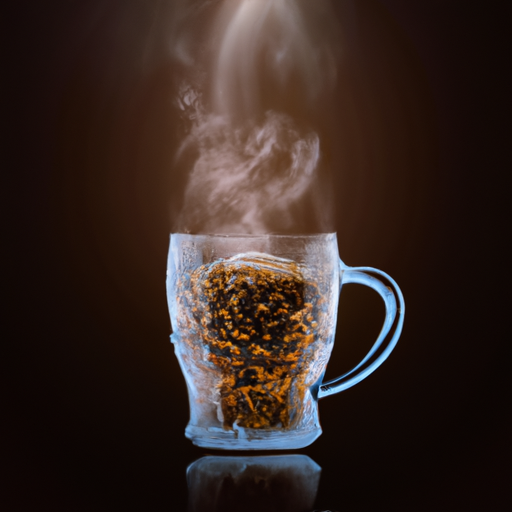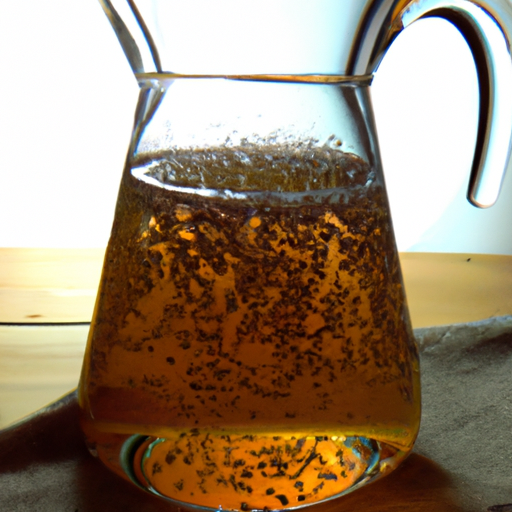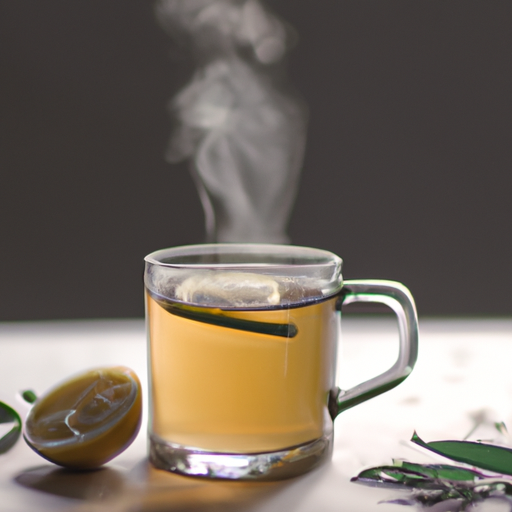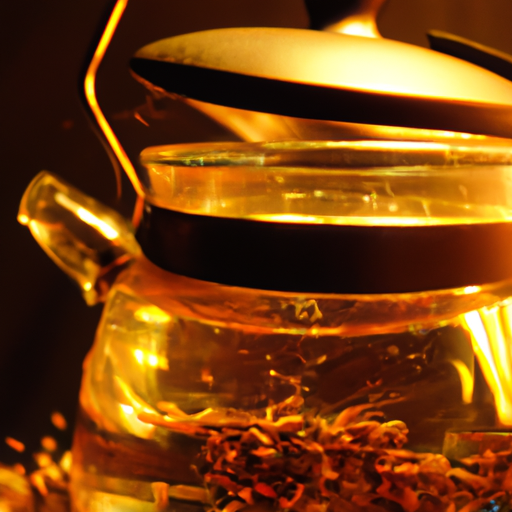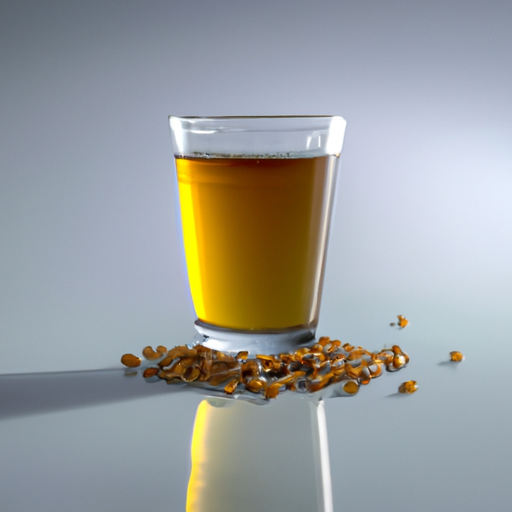I’ve always had an interest in the various advantages of different tea varieties. Not too long ago, my attention was captured by barley tea, particularly its widespread appeal in East Asian nations such as Japan and Korea. Through my investigation, I discovered that barley tea isn’t just a thirst-quenching beverage but also offers possible health benefits.
In this article, I will delve into the nutritional content of barley tea and its potential health benefits.
Barley tea is made from roasted barley grains and has a nutty, toasty flavor. It is caffeine-free and low in calories, making it a healthy alternative to sugary drinks. The tea is rich in antioxidants and phytonutrients, which are beneficial for our health.
I will discuss these nutrients in detail in the following sections of the article. Overall, barley tea is a unique and nutritious beverage that is worth exploring.
Key Takeaways
- Barley tea contains important nutrients such as antioxidants, amino acids, vitamins, dietary fiber, iron, magnesium, and zinc.
- Barley tea is a natural diuretic that helps to flush out excess water from the body and aid in weight loss by regulating blood sugar levels, reducing inflammation, and increasing feelings of fullness.
- Studies have linked the consumption of barley to a reduced risk of heart disease, type 2 diabetes, and certain types of cancer, due to its rich source of phytonutrients such as flavonoids, lignans, and phenolic acids.
- Traditional brewing of barley tea infuses the comforting flavors of nutty, roasted barley into every sip, while cold brew methods can add additional flavors such as lemon, mint, cinnamon, ginger, and honey.
Nutritional Overview of Barley Tea
You’ll be pleased to know that barley tea contains a variety of important nutrients, including antioxidants, amino acids, and vitamins. One of the most notable benefits of drinking barley tea is that it’s completely caffeine-free, making it a great alternative to coffee or other caffeinated beverages. This makes it an ideal choice for anyone who’s trying to cut back on their caffeine intake.
In addition to being caffeine-free, barley tea is also a great choice for hydration. It’s a natural diuretic, which means that it helps to flush out excess water from your body. This can be especially helpful if you’re prone to retaining water or if you’re trying to lose weight. Plus, since it’s made with water and barley grains, it’s a low-calorie drink that won’t add unnecessary calories to your diet.
If you’re looking to get the most out of your barley tea, it’s important to choose a variety that’s made with roasted barley grains. Roasted barley grains are higher in antioxidants and other beneficial compounds than raw barley grains. These compounds help to protect your body against free radicals and other harmful substances that can lead to inflammation and disease.
So, the next time you’re looking for a healthy and refreshing drink, be sure to give barley tea a try.
Roasted Barley Grains
If you’re a fan of nutty and toasty flavors, then roasted barley grains are perfect for you! These grains are a common ingredient in beer production, but they also have a variety of other uses.
Roasted barley grains are a rich source of dietary fiber, which can aid in digestion and promote a feeling of fullness. They also contain a number of essential vitamins and minerals, including iron, magnesium, and zinc.
Aside from their nutritional benefits, roasted barley grains are a versatile ingredient in the kitchen. They can be used to add depth and complexity to soups, stews, and other savory dishes. They can also be ground into flour and used as a substitute for wheat flour in baking.
Roasted barley tea is a popular beverage in many countries, and is often served hot or cold with a splash of milk or honey.
In addition to their culinary uses, roasted barley grains have been shown to have a number of health benefits. Studies have linked the consumption of barley to a reduced risk of heart disease, type 2 diabetes, and certain types of cancer. This is due in part to the high levels of phytonutrients found in barley, which have been shown to have anti-inflammatory and antioxidant properties.
These phytonutrients will be discussed further in the next section.
Phytonutrients
Get ready to discover the powerful health benefits of phytonutrients found in roasted barley grains! Phytonutrients are natural compounds found in plants that are beneficial for human health.
Barley tea is a rich source of phytonutrients such as flavonoids, lignans, and phenolic acids. These compounds are known for their antioxidant and anti-inflammatory properties, which help protect the body against various diseases.
Flavonoids are a class of phytonutrients that are abundant in roasted barley grains. They’re known for their anti-inflammatory and antioxidant properties, which help protect against chronic diseases such as heart disease, cancer, and diabetes.
Lignans are another type of phytonutrient found in barley tea. They’ve been shown to have anti-cancer properties and may help reduce the risk of breast cancer in women.
Phenolic acids are also present in roasted barley grains. They’ve been shown to have antiviral and antibacterial properties, which help protect against infections. They also have antioxidant properties, which help protect against oxidative stress, a condition that can lead to various chronic diseases.
In addition to these benefits, barley tea is also a good source of vitamins and minerals such as magnesium, potassium, and vitamin B6.
Barley tea’s potential health benefits are wide-ranging, from protecting against chronic diseases to promoting overall health and wellness. In the next section, we’ll explore potential health benefits of barley tea in more detail.
Potential Health Benefits
With its abundance of flavonoids, lignans, and phenolic acids, roasted barley grains have the potential to provide numerous health benefits. Barley tea may aid in weight loss by regulating blood sugar levels, reducing inflammation, and increasing feelings of fullness. Additionally, barley tea has been shown to improve digestion by promoting the growth of beneficial gut bacteria and reducing the risk of gastrointestinal issues.
Studies have found that the soluble fiber in barley tea may help to regulate blood sugar levels and reduce the risk of type 2 diabetes. The lignans and phenolic acids in barley tea have also been shown to have anti-inflammatory properties, which may reduce the risk of chronic diseases such as heart disease and cancer. Furthermore, barley tea contains antioxidants that can protect against oxidative stress and improve overall health.
In addition to its potential health benefits, barley tea is a delicious and refreshing beverage that is easy to prepare and can be enjoyed hot or cold. As research on barley tea continues to grow, it’s likely that more benefits will be discovered.
Next, we’ll explore some recent research studies on barley tea and its potential health benefits.
Research Studies on Barley Tea
Recent research studies have delved into the potential health benefits of roasted barley grains, specifically its flavonoids, lignans, and phenolic acids. These compounds have been shown to aid in weight loss, improve digestion, regulate blood sugar levels, and reduce the risk of chronic diseases such as heart disease and cancer.
Here are some of the latest findings:
-
Barley tea and digestive health: A study published in the Journal of Agricultural and Food Chemistry found that the flavonoids in barley tea may help protect against gastrointestinal disorders by inhibiting the growth of harmful bacteria in the gut. Another study in the Journal of Nutrition and Metabolism showed that barley tea consumption improved bowel regularity and reduced constipation in elderly women.
-
Barley tea and cardiovascular health: Several studies have suggested that the phenolic acids in barley tea may have a protective effect against heart disease. For example, a study in the Journal of Medicinal Food found that regular consumption of barley tea decreased blood pressure and improved vascular function in adults with mild hypertension. Another study in the Journal of Nutrition and Metabolism showed that barley tea consumption decreased levels of total cholesterol and LDL (bad) cholesterol in elderly women.
Overall, these studies suggest that incorporating barley tea into your diet may have numerous health benefits. But how do you actually brew barley tea? Let’s find out in the next section.
How to Brew Barley Tea
So, let’s talk about how to brew barley tea.
There are traditional methods that have been used for centuries, as well as newer techniques like the cold brew method. I personally find that the cold brew method yields a smoother and less bitter taste, but it’s always worth trying both to see which one you prefer.
Traditional Methods
Like a warm hug on a chilly day, brewing barley tea using traditional methods infuses the comforting flavors of nutty, roasted barley into every sip. Traditional brewing of barley tea has a cultural significance in many Asian countries, where it’s often served as a refreshing summer drink or as a hot beverage during winter months.
To make barley tea using traditional methods, start by toasting barley in a dry pan over medium heat until it turns golden brown and releases a nutty aroma. Then, add the toasted barley to a pot of boiling water, reduce the heat, and simmer for 10-15 minutes. Strain the tea and serve hot or chilled. This brewing method results in a rich, robust tea with a slightly bitter aftertaste.
Transitioning into the subsequent section about the cold brew method, the traditional method of brewing barley tea may take some time and effort. However, there’s another method that requires less attention and can be prepared in advance – the cold brew method.
Cold Brew Method
In the previous section, we explored the traditional methods of brewing barley tea. However, there is another popular method that is gaining popularity in recent years – the cold brew method. As the name suggests, this method involves steeping the tea leaves in cold water for an extended period, typically overnight.
One of the benefits of the cold brew method is that it results in a milder flavor compared to the traditional hot brew method. Additionally, the flavor variations that can be achieved through the cold brew method are numerous, as the longer steeping time allows for a more nuanced extraction of the tea’s flavors. To showcase some of the flavor variations that can be achieved through the cold brew method, here is a table outlining some popular brewing techniques and their resulting flavors:
| Brewing Technique | Flavor |
|---|---|
| Lemon Barley Tea | Tart and refreshing |
| Mint Barley Tea | Cool and soothing |
| Cinnamon Barley Tea | Warm and spicy |
| Ginger Barley Tea | Zesty and invigorating |
| Honey Barley Tea | Sweet and mellow |
In the next section, we will explore the potential health benefits of barley tea in traditional East Asian medicine.
Barley Tea and Traditional East Asian Medicine
Barley tea is a staple in traditional East Asian medicine and has been used for centuries to improve digestion and boost immunity. Traditional brewing methods involve roasting barley grains over an open flame, then steeping them in hot water. The resulting tea has a nutty, slightly sweet flavor and is typically served hot or cold.
In addition to its cultural significance, barley tea has several health benefits. It contains compounds called catechins, which reduce inflammation and protect against heart disease. It also contains melatonin, a hormone that helps regulate sleep, making it a popular bedtime beverage in many East Asian countries.
Compared to green tea, which is also widely consumed in East Asia, barley tea is caffeine-free and less bitter. It also contains more fiber than green tea, which may help with digestion. However, green tea has been found to have higher levels of certain antioxidants, making it a popular choice for those looking to boost their overall health.
Barley Tea vs. Green Tea
You’ll be surprised to learn that green tea and barley tea have some key differences in terms of caffeine content, taste, and antioxidant levels. While green tea is known for its high caffeine content, barley tea is naturally caffeine-free. This makes it a great option for those who are sensitive to caffeine or looking to reduce their intake.
In terms of taste, green tea has a grassy and slightly bitter flavor, while barley tea has a nutty and slightly sweet flavor. This makes barley tea a more versatile option for those who prefer a milder taste or want to experiment with different flavor profiles.
When it comes to antioxidant levels, both green tea and barley tea contain powerful antioxidants that can help protect the body against disease and promote overall health. However, studies have shown that barley tea contains higher levels of certain antioxidants, such as melatonin and tryptophan, which can have additional benefits for sleep and mood regulation.
Moving on to barley tea recipes, there are many different ways to enjoy this delicious and nutritious beverage. From traditional Japanese recipes to modern twists on classic flavors, there’s something for everyone to enjoy.
Barley Tea Recipes
Get ready to tantalize your taste buds with some amazing barley tea recipes that are sure to impress!
One of my favorite ways to enjoy barley tea is by making barley tea cocktails. To make this refreshing drink, simply brew a strong batch of barley tea and mix it with your favorite liquor, like vodka or gin. Add some fresh herbs and fruit for an extra burst of flavor. This drink is perfect for any summer gathering or party.
Another way to enjoy barley tea is by making barley tea ice cream. This unique dessert is a great way to cool down on a hot day. To make it, simply infuse your cream base with brewed barley tea and add some honey or sugar for sweetness. Freeze it overnight and enjoy the creamy, nutty flavor of barley tea in every bite. This dessert is perfect for impressing your friends and family with something new and different.
Overall, barley tea is a versatile ingredient that can be used in a variety of recipes. Whether you want to enjoy it in a refreshing cocktail or a creamy dessert, there are endless possibilities. So, give these recipes a try and see how barley tea can take your cooking game to the next level.
Frequently Asked Questions
How long has barley tea been consumed in East Asian countries?
Have you ever wondered how long barley tea has been consumed in East Asian countries? Well, let me tell you that it has a rich history and cultural significance in these regions.
Barley tea, also known as mugicha, has been consumed for centuries in Japan, Korea, and China. In Japan, it’s a staple drink during the hot summer months as it’s believed to have a cooling effect on the body. In Korea, it’s often served as a traditional tea during meals and is believed to aid in digestion. In China, it’s known for its medicinal properties and is believed to have a calming effect on the mind and body.
Overall, barley tea has been a beloved beverage in East Asian culture for centuries and continues to be enjoyed for its taste and health benefits.
Is barley tea safe for pregnant women to consume?
As a pregnant woman, I’m always concerned about the safety of the foods and beverages I consume. I’ve researched and found that barley tea is generally considered safe for pregnant women to drink in moderation. However, it’s always best to consult with a healthcare provider to ensure that it’s safe for your individual situation.
In terms of nutritional content, barley tea is rich in antioxidants and has been shown to have potential health benefits such as reducing inflammation and improving digestion. It’s also low in calories and caffeine-free, making it a great alternative to other beverages.
Can barley tea help with weight loss?
Hey there, have you heard of the latest weight loss trend? Barley tea! Yes, you’ve read that right. Barley tea benefits include potential weight loss properties, according to some scientific evidence.
Studies show that the compounds found in barley tea may help to reduce body weight and fat accumulation. However, it’s important to note that more research is needed to fully understand the extent of these benefits.
So, if you’re looking to shed some pounds, incorporating barley tea into your diet may be a good option to consider.
Are there any side effects associated with regular consumption of barley tea?
As far as I know, regular consumption of barley tea doesn’t pose any significant risks to one’s health. However, it’s important to note that excessive intake of any substance can be harmful.
While there are no recommended dosages for barley tea, it’s generally safe to consume 2-3 cups per day. Drinking too much of it may cause dehydration or diarrhea due to its diuretic effect.
Additionally, individuals who are allergic to gluten may want to avoid barley tea since it contains gluten. Overall, it’s always best to consult with a healthcare professional before making any significant changes to your diet to ensure that you’re not putting yourself at risk.
How does the taste of barley tea compare to other herbal teas?
In my experience, the taste of barley tea is distinct from other herbal teas. It has a nutty and slightly sweet flavor that is refreshing and soothing.
When comparing the taste of barley tea to green tea, I find that green tea has a stronger and more bitter taste. However, both barley tea and green tea contain numerous health benefits.
Barley tea is known to contain antioxidants and minerals such as potassium, calcium, and magnesium. It also may help regulate blood sugar levels and aid in digestion.
On the other hand, green tea contains high amounts of catechins, which have been linked to reducing the risk of chronic diseases such as cancer and heart disease.
Ultimately, both barley tea and green tea have unique tastes and health benefits, and it comes down to personal preference and individual health goals when choosing between the two.
Conclusion
Overall, barley tea is a tasty and nutritious beverage that has been enjoyed for centuries in East Asia. It’s made from roasted barley grains and contains a variety of phytonutrients that may have potential health benefits.
Research studies have shown that barley tea may help improve digestion, lower cholesterol levels, and reduce the risk of certain cancers. One interesting statistic is that in Japan, barley tea is consumed more frequently than any other tea, including green tea.
This may be due to its unique flavor and its reputation for aiding in digestion and promoting overall health. Whether enjoyed hot or cold, barley tea is a refreshing and healthy alternative to sugary drinks. So, next time you’re looking for a new beverage to try, consider giving barley tea a chance!

